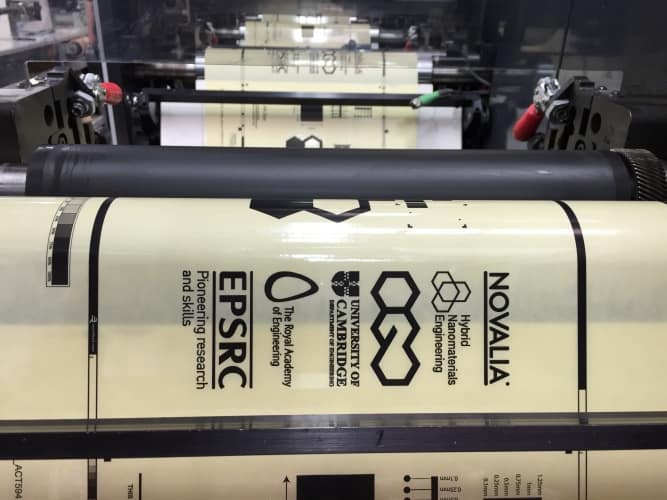Developed by researchers at the University of Cambridge in collaboration with Cambridge-based technology company Novalia, the method allows graphene and other electrically conducting materials to be added to conventional water-based inks and printed using typical commercial equipment, the first time that graphene has been used for printing on a large-scale commercial printing press at high speed.

“There are lots of companies that have produced graphene inks, but none of them has done it on a scale close to this,” said Dr Tawfique Hasan of the Cambridge Graphene Centre (CGC), who developed the method. “Being able to produce conductive inks that could effortlessly be used for printing at a commercial scale at a very high speed will open up all kinds of different applications for graphene and other similar materials.”
“This method will allow us to put electronic systems into entirely unexpected shapes,” said Chris Jones of Novalia. “It’s an incredibly flexible enabling technology.”
The technique works by suspending tiny particles of graphene in a ‘carrier’ solvent mixture, which is added to conductive water-based ink formulations.
The ratio of the ingredients can be adjusted to control the liquid’s properties, allowing the carrier solvent to be easily mixed into a conventional conductive water-based ink to significantly reduce the resistance.
The graphene-based inks have been printed at a rate of more than 100 metres per minute, which is in line with commercial production rates for graphics printing, and far faster than earlier prototypes. The group tested the method on a typical commercial printing press, which required no modifications in order to print with the graphene ink.




Red Bull makes hydrogen fuel cell play with AVL
Formula 1 is an anachronistic anomaly where its only cutting edge is in engine development. The rules prohibit any real innovation and there would be...